As we are moving into our new home at The Old School House on Green Lane very soon, we wanted to find out more about the history of not just our building but the surrounding area. So, we knew just the man to educate us, local historian, Adrian Farmer, who also had a sneaky peek at our renovations.
This blog will be of interest to anyone who thinks they know Belper but will definitely open your eyes to the hidden parts you may have walked past many times but not really noticed.


The Missing Bridge!
We started our guided walk at the Memorial Gardens looking down King Street – such a familiar sight to the residents of Belper! What is less familiar is the fact that there was once an ornate bridge across the road from what was the Strutt’s Mansion to the garden opposite (now the Memorial Gardens). The reason for this bridge was purely so that Jedidiah Strutt could have his staff take food for parties in the garden via the bridge rather than using the road which the general public used. How extravagant! Especially when you consider that the bridge was only there from 1832-1867!
After the Strutts had relocated, their prior home (minus the bridge), known as Green Hall, was used as a Red Cross hospital during the First World War. Adrian was keen to provide us with a gory anecdote that the soldiers suffered from Trench Foot and any lost limbs were placed into a steel bucket with Belper written on it, so they could be taken away for analysis. Thankfully medical research has clearly come a long way!
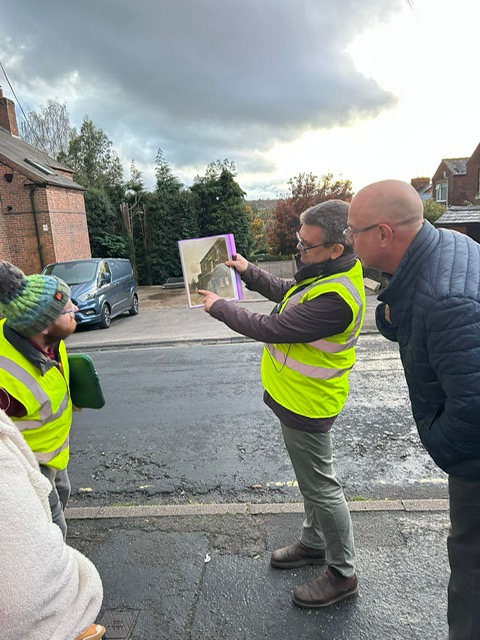
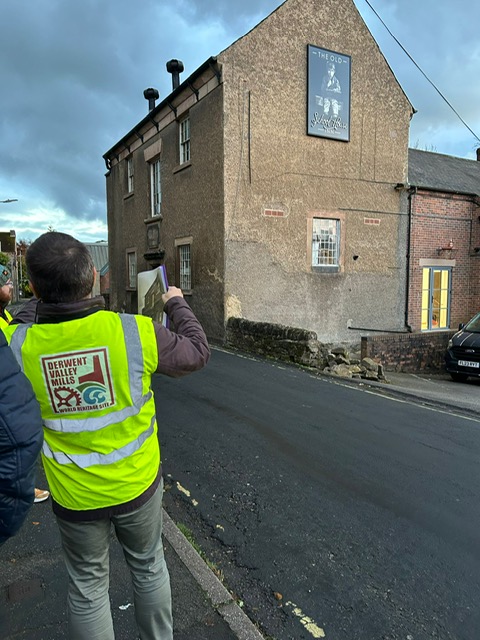
A new home for Claire’s School Solutions in the second oldest building in Belper.
As we stood outside our new home, the oldest part of the building, which we will be renovating in the future, we could see that it has not changed a great deal from the original photographs Adrian showed us.
We then moved to Green Lane -the location of our new premises. We were surprised to find out that this lane was previously called ‘Market Street Lane’ and before that ‘Meeting House Lane’ which makes sense as we have also been informed that our new building was actually called The Old Meeting House.
The newer part of the building is where we will be moving into shortly and Adrian was fascinated to have a tour round to see how the renovations were going. We are passionate about keeping the spirit of the school house and being sensitive to the aesthetic appearance of what is the second oldest building in the whole of Belper. We view it as a real privilege to be restoring this building and cannot wait to move in! Claire has also been committed to using local suppliers and craftsmen in order to support the local community.

The area adjacent to the Dentists surgery was originally the stables – which is clear to see from the photo below. This also explains why the turning circle for the horses is marked by the low curved wall which is still visible.
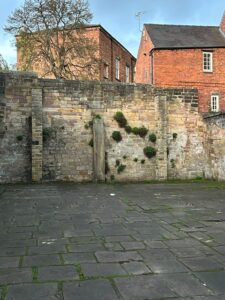
Up, up and away!
As we proceeded along the road towards Albert Street, we learnt that in the 1880s this area was known as ‘Festival Field’. We were gobsmacked to learn that this was the scene of what should have been the first manned balloon flight. However, for whatever reason, it didn’t take off as planned, the reason given that Belper must have ‘bad air!’ Once the man had come out of the basket, the balloon then shot into the air and flew over towards the Chevin, the owner pursuing it on a borrowed horse! It is definitely the stuff that would make the local news these days!

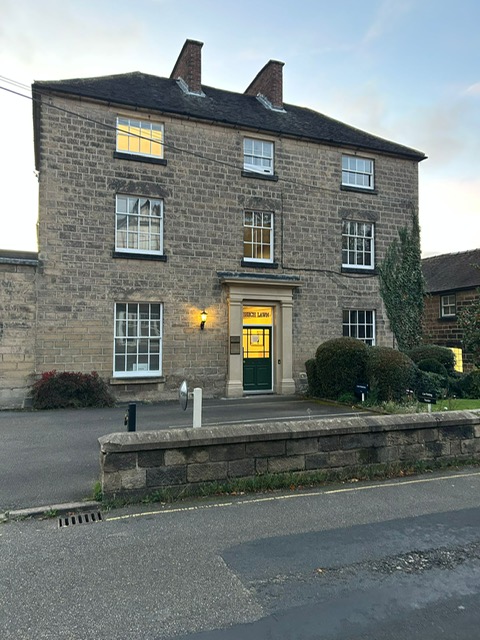
Other buildings of note along Green Lane.
As we looked at Beech Lawn, now a solicitors, this was a Drs, with the attached surgery in use until the 1960s. Sadly the Beech trees have since been removed but the name remains. Opposite this The Gables – a property which is currently being tastefully restored – the decorators were hard at work even on a Friday at 7pm! This was another of the Strutt properties, but tenants were not found until 1914 when it was used as a refugee centre.
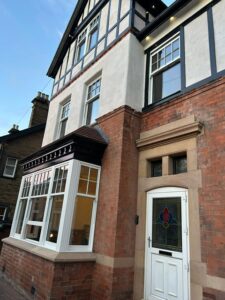
The area near Green Lane was the religious sector of Belper with the Congregational Church, St Peters Church, The Unitarian Chapel and there was once a Primitive Methodist chapel opposite St Peters called the Salem Chapel.
One interesting fact was that St Peters Church’s four tower turrets were originally surmounted by stone pinnacles. However, one fell through the roof, narrowly missing the congregation, and later a fire in the tower toppled another, so the decision was made to remove the other pinnacles so it was aesthetically more pleasing.
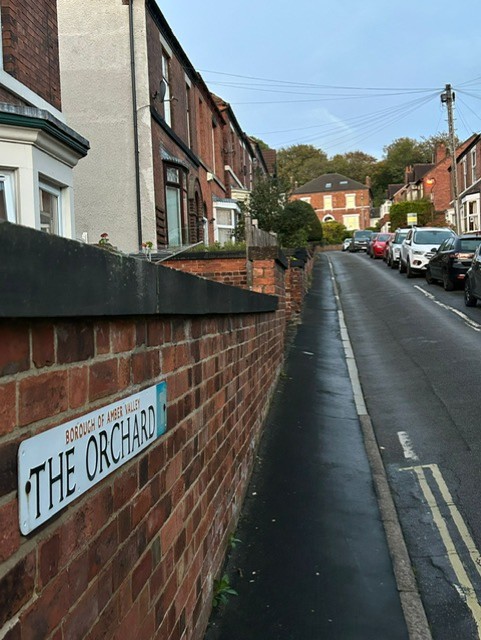
Old town and New town.
As you look up the road ‘The Orchard’, you can see a beautiful house, once the Beecholme school for girls. The rest of the road, which leads up to the house, was previously a gated driveway up to the school.
As we proceeded along Green Lane, we learnt that Field Lane was the boundary between the old and the new town. The Strutt workers were located on the other side of Field Lane, apart from the ’old town’. The worker’s houses were tightly packed located on Field Row, the Short Rows, Long Row and Joseph, William and George Street (named after Jedediah Strutt’s three sons).
Cluster houses.
On these parallel roads, cluster houses were built. The houses are designed to form four back to back houses. Each block is sited in the centre of a large plot and, as they were built, each house has a building in the garden incorporating a privy and a pigsty. It also meant that heating could be shared. Quite the Eco initiative ahead of its time!
Field Row features houses of three stories, a step up from the nearby houses in the Short Rows. These were among the more expensive Strutt properties, demanding a higher rent.
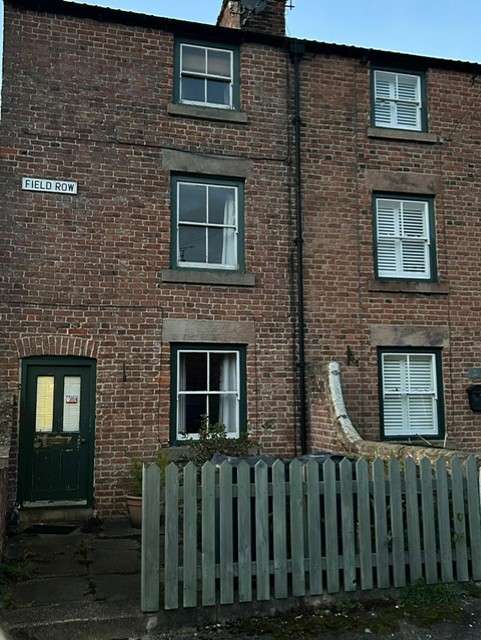
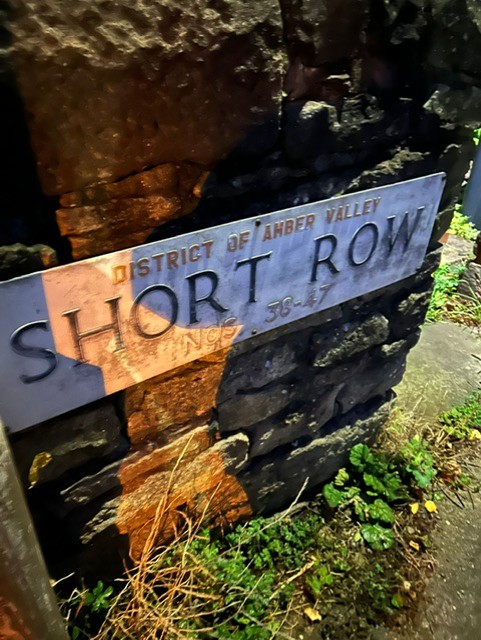
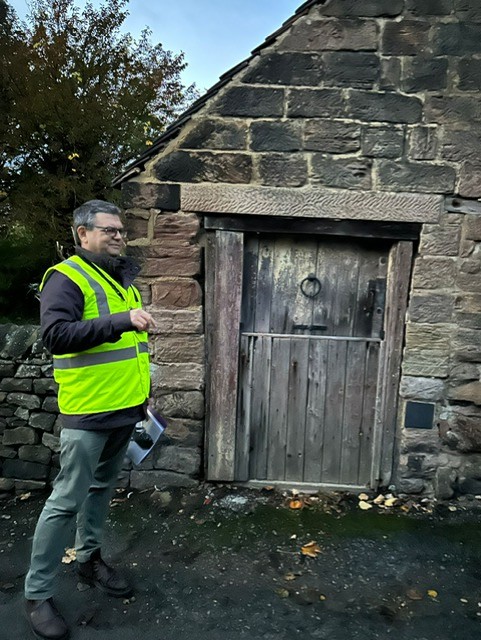
Home of the Nailers!
As we wandered down Joseph Street, we were able to see a unique, lasting reminder of the eminence of nail-making in the town. The Nail Shop was just one of the buildings where up to 1000 nails were produced each week day. There was high quality iron ore close to Belper. At one point, there were 400 separate nail makers in the town. Due to this significant workmanship in Belper at the time, can you guess now why the local football team are still to this day called ‘The Nailers’! How many of those standing supporting on a Saturday actually know why this is though?
You can see here that the nail shop stands almost exactly as it was, with the beautifully painted windows and cast iron windows.

Sinister times at The Cedars.
As the night drew in and the air turned cold, Adrian took us down a sinister path where we learnt that about the murder of Phoebe Barnes in the Cedars. On Friday the 26th of March 1852, Anthony Turner was hanged for the murder of his employer, Mrs. Phoebe Barnes at Belper. She had written to him dismissing him from his post. Turner borrowed a large carving knife (used for cutting bacon) from a local shop, forced his way into her house, dragged her to the back yard and slit her throat.
It appears that there is nothing like an ex-employee scorned?
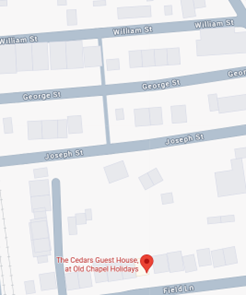
Gitties, ginnels or alleyways? No channels!
Cutting through the incredibly narrow paths – called channels – you can come to the other parallel roads of George Street and William Street.
As we all had to breathe in, clearly the inhabitants who lived here prior, were built very differently!
Gas-lit beauty.
To Long Row next, which is renowned for its beauty and breathtaking appearance. Even for someone who dropped her daughter off at the school here for many years, the sight of this once-gaslit street on this chilly October night, was still a sight to behold. The stunning gas street lamps were restored in order to keep the unique appearance of this iconic street. Belper was only the second place out of London to have gas street lamps installed in 1822. It came of no surprise to us to learn that when Adrian brought a contingent from UNESCO on a similar tour to us, one of the party was moved to tears by this street’s beauty.
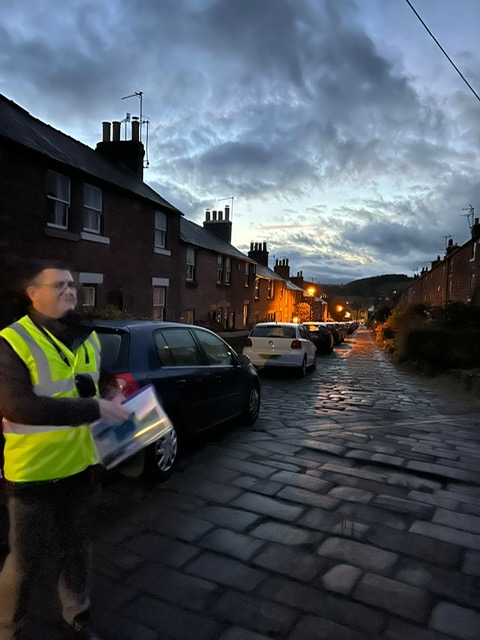
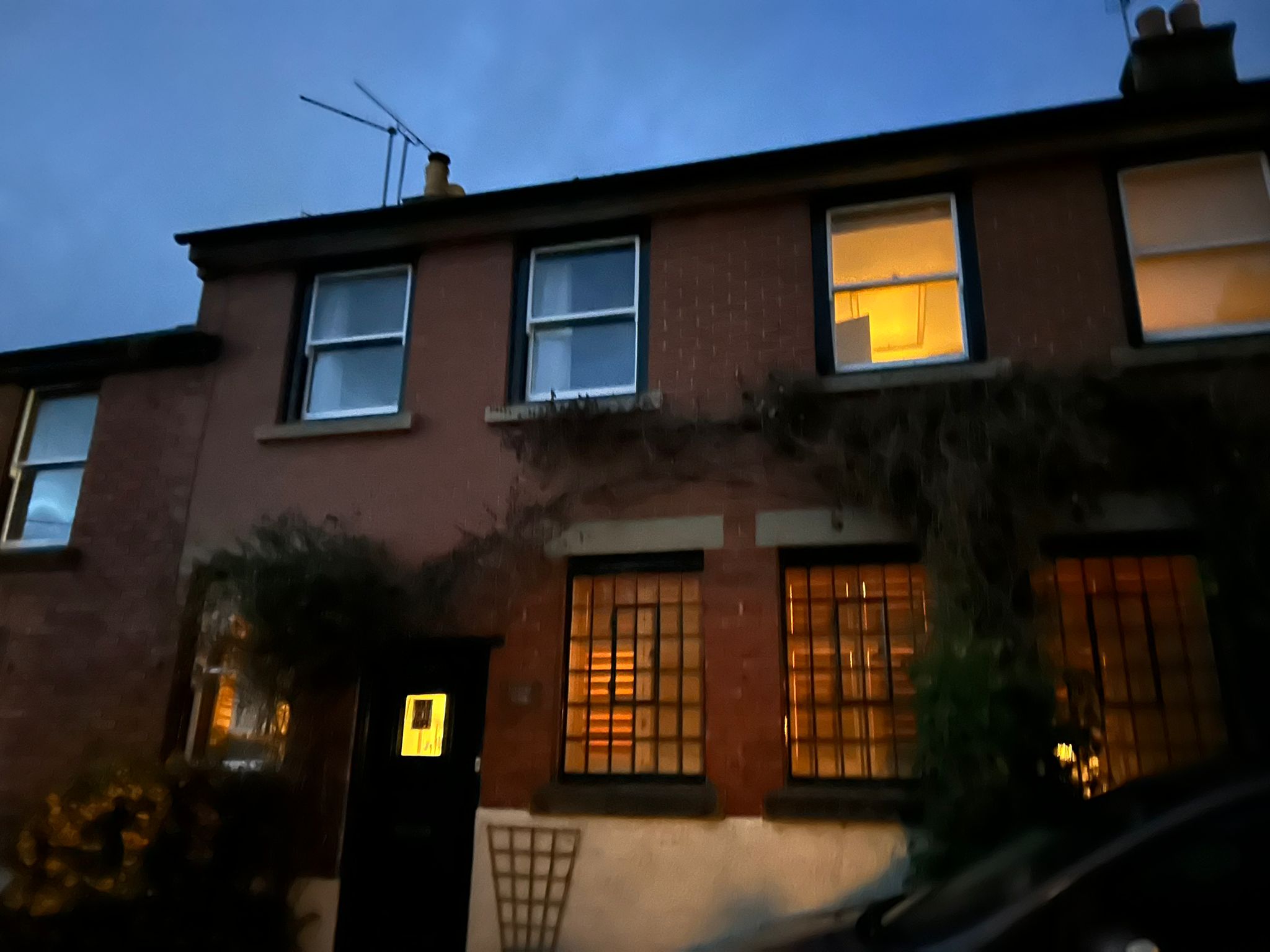
Belper ice-cream.
At the top of the road, stands the laundry house, which until 1992 was home to the ice cream factory Mazzas. Mazzas was a well-known family business.
What a pity that we do not still have an ice cream factory in the town, especially at the end of the road with a school on?

Bring back Wakes week!
We were astonished to discover that there used to be ‘Wakes Week’ in the town in July. As part of this, there were wooden arches built over the road, decorated with garlands and flowers. Again, the tradition of Wakes week still happens in some Derbyshire villages, but sadly no more in Belper.
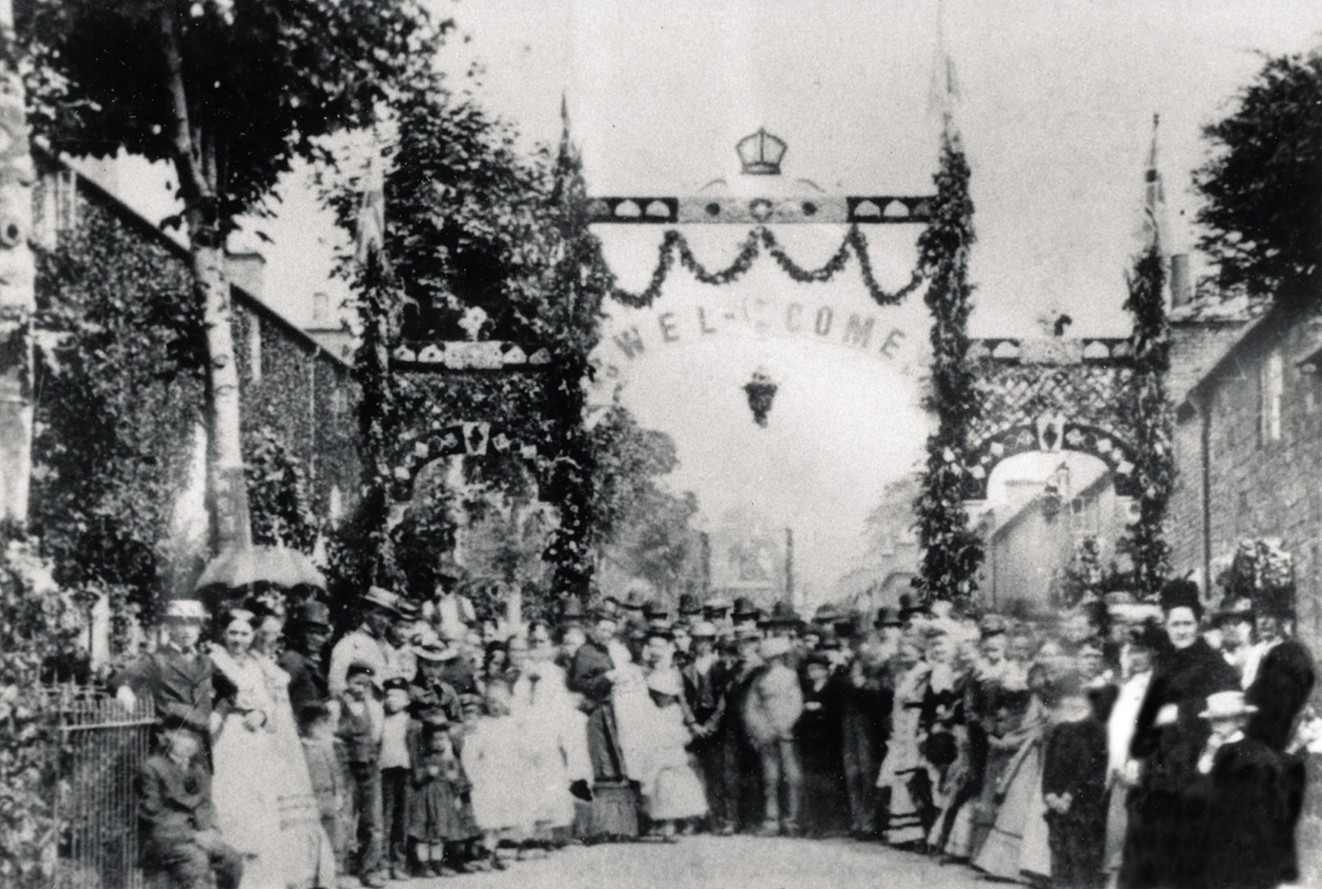
The return of the Donkey races!
As we make our way back to Green Lane, a water pump on Short Row marks the start of the infamous donkey races, which will be re-enacted next year for the special 250th anniversary celebrations, although sadly only with hobby horses! Although, perhaps it is best as when real donkeys were used, a brawl broke out when riders became overly-competitive and fought over who was to win the barrel of ale! I am sure next year’s celebrations will be far more dignified!
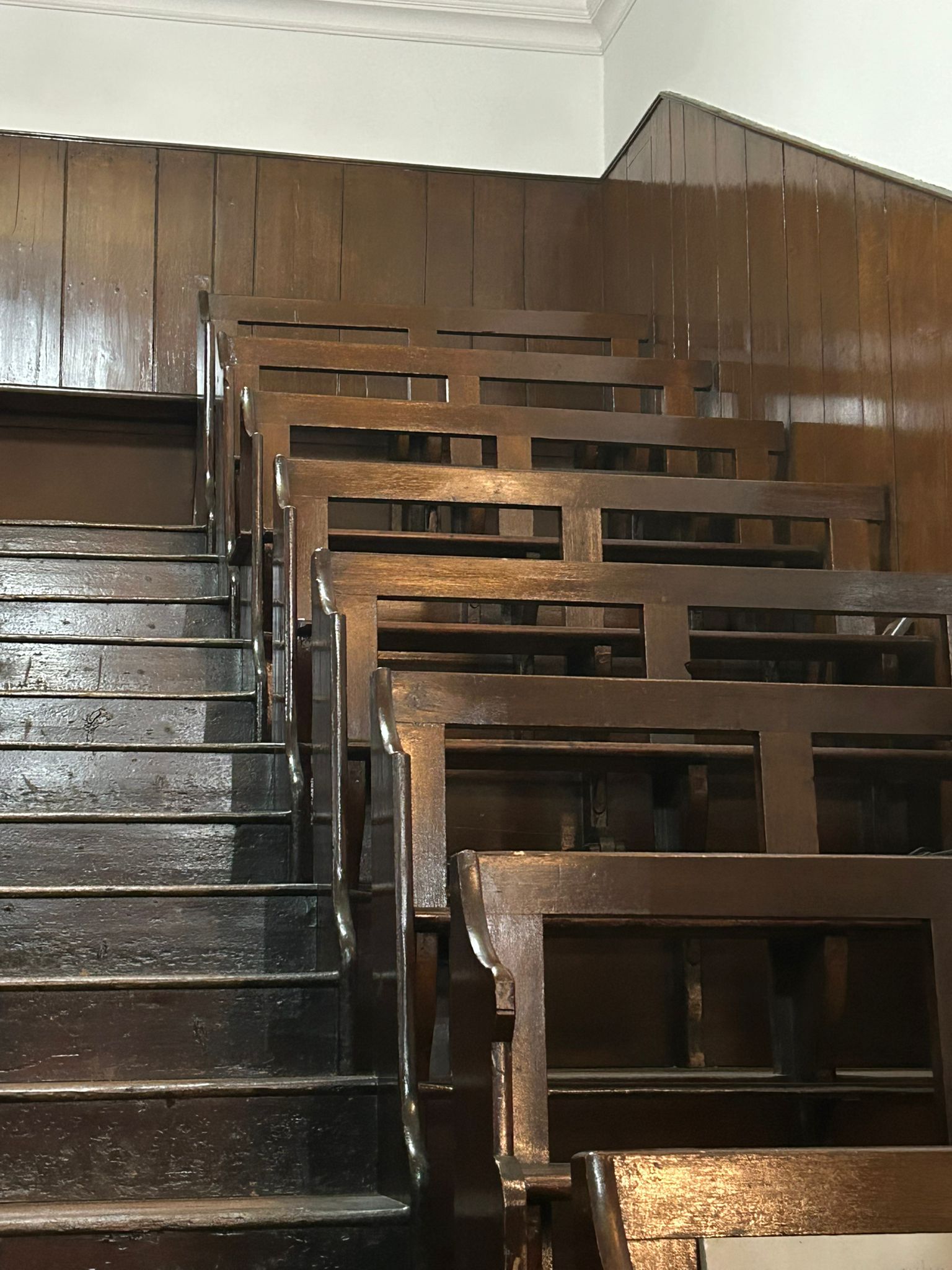
Steeped in history at our final stop.
Our final stop was to be the Unitarian chapel, very appropriate as we are moving into the Unitarian School House at the other end of the lane. Jedediah Strutt built this building and he was a committed Unitarian. Inside, it was if we were stepping back in time, almost as if we could have imagined Jedediah sitting in the pews. Although not these particular ones as these are tiny, specifically for the children of the Sunday school.
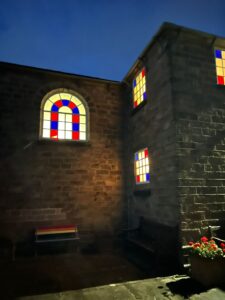
The culmination (and highlight of our tour) was when we were offered the opportunity to see the vault. Of course, we jumped at the chance – although with some trepidation on this dark night! However, the vault was not underground, as it is in many churches. Occasionally the vault is opened for tours and candle lit. The family crypt has open boxed spaces where the coffins would be placed and then sealed in. It was a sobering end to our visit.
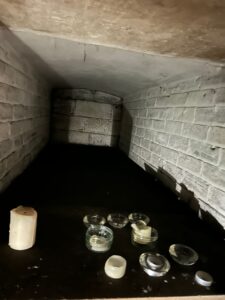

The Claire’s team thoroughly enjoyed our historical tour of Green Lane and feel truly privileged to be a part of the ongoing restoration of the town. It is so important to embrace the history of our town, preserve it in keeping with the nature of what has passed before and look forward to many more years of being in Belper – this epicentre of Derwent Mills history.
For more information about the Unitarian chapel visit https://www.belperunitarians.org/
Claire’s School Solutions were happy to give a donation to the Unitarian chapel following this talk.
Blog written by Jo Gotheridge 12 .11.25

0 Comments